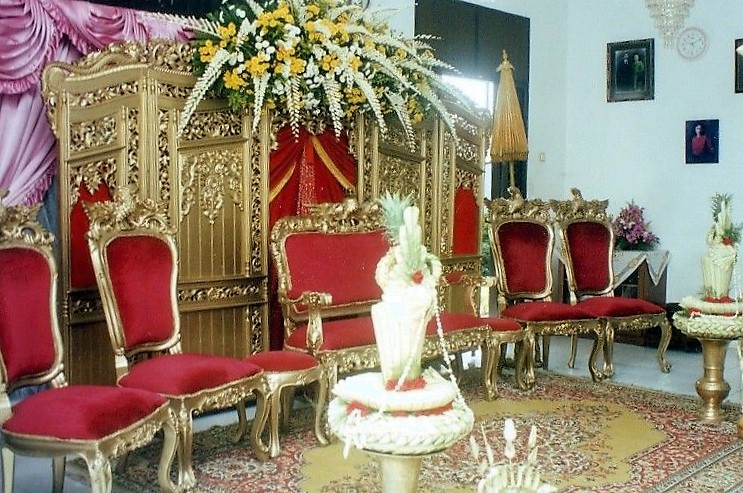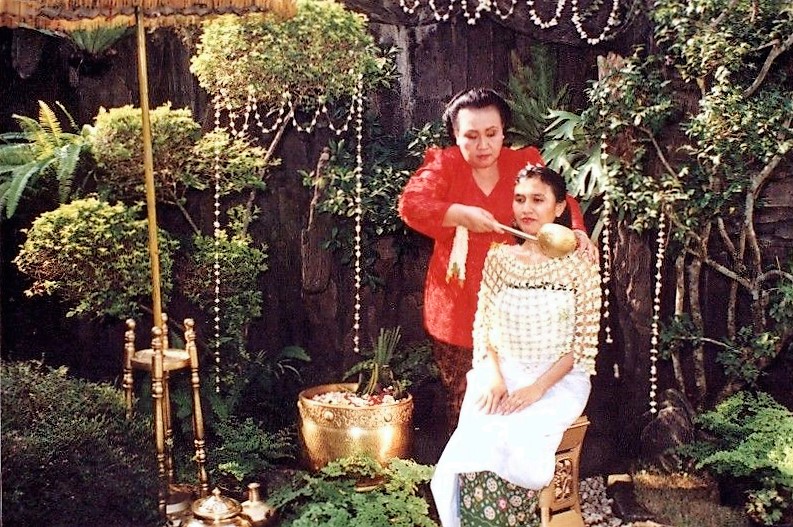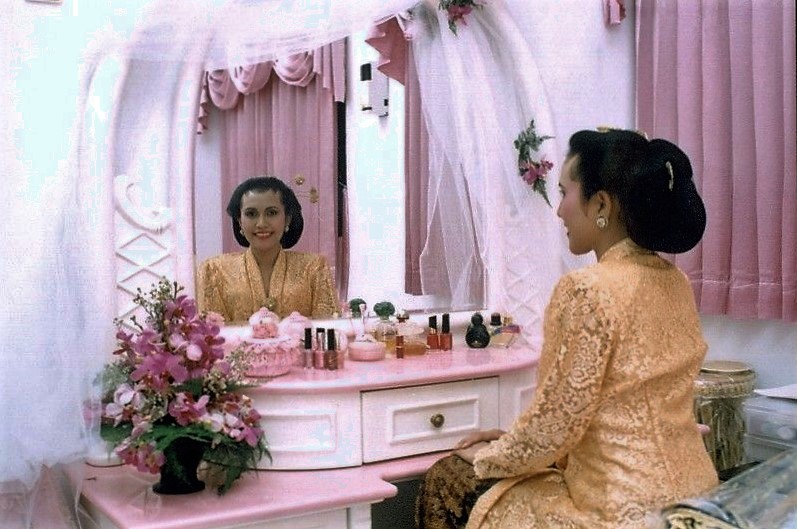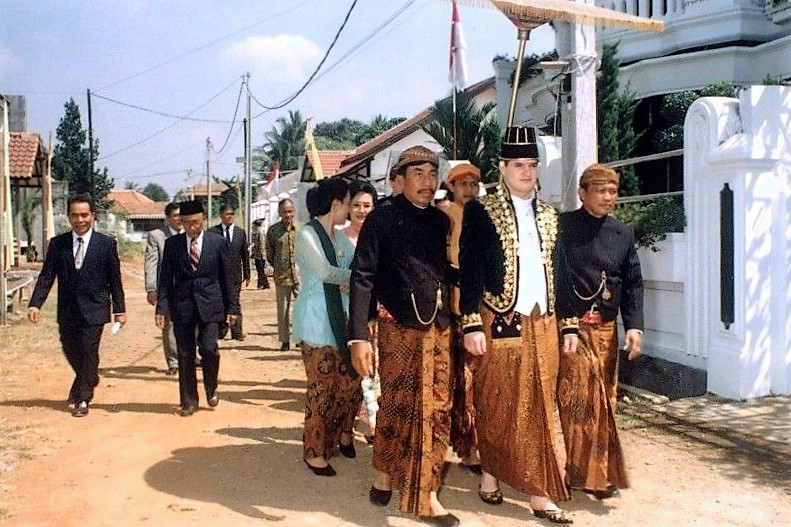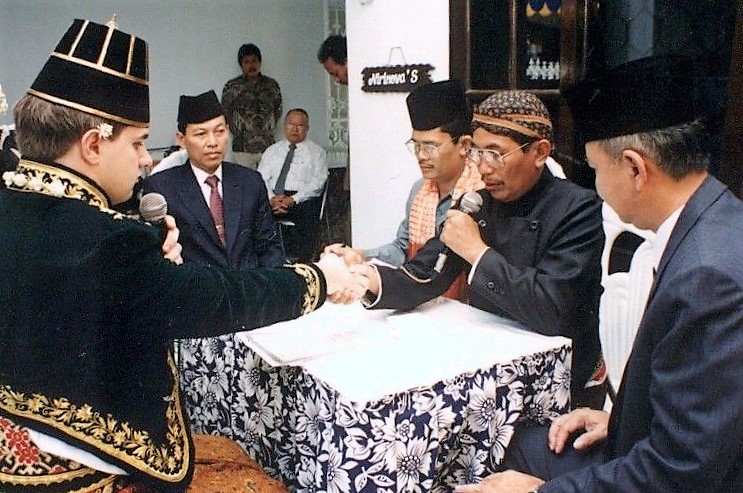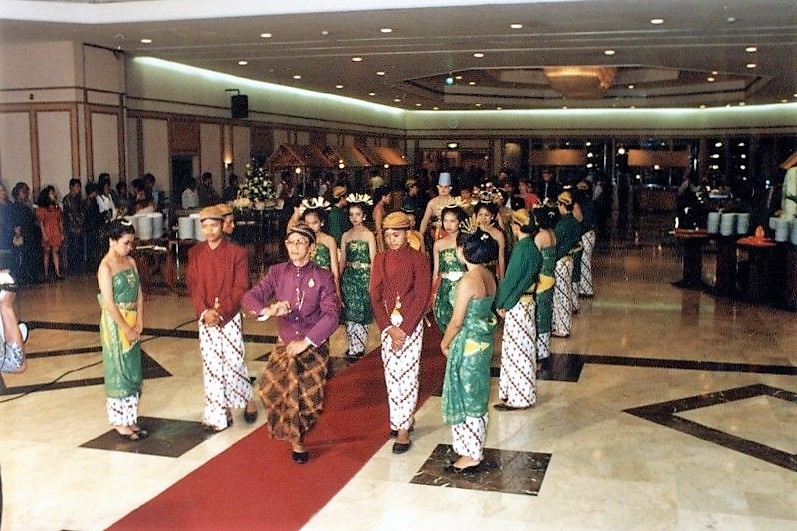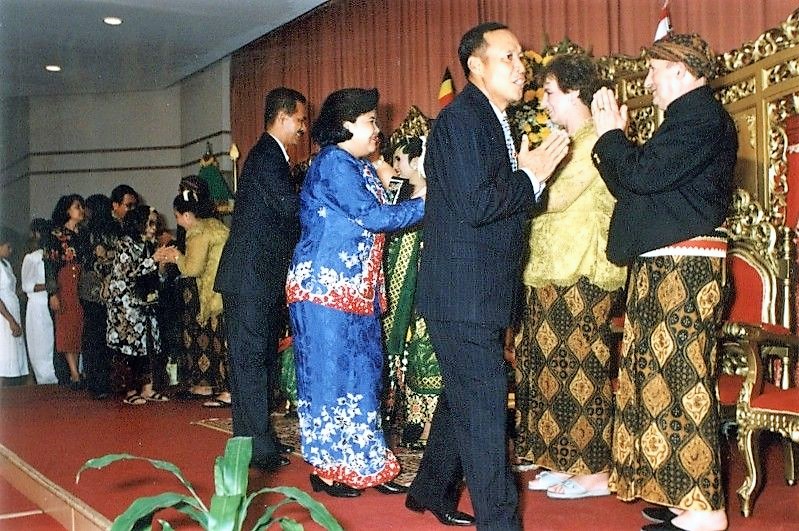Javanese Wedding: Love and Marriage in Indonesia
Indonesia has many diverse cultures (an estimated number of 300 cultures and languages, among 200 million Indonesians, living on 13.677 different islands). This enormous variety in cultures has a great impact on marriage ceremonies. Every wedding in Indonesia has a different ceremony, each of them influenced by the cultures of the families involved. Every ceremony is a step in the creation of a new bound between two families.
The parents of the man (would-be-bridegroom) send an envoy to the parents of the woman (would-be-bride), proposing that their son is willing to marry their daughter. Nowadays, for practical reasons, the parents of both sides can talk directly. The parents of the couple have to approve the marriage.
Usually, the parents of the would-be-bride have a greater say, as they are the ones who will organise the ceremonies (a big wedding will require a Paés Agung (the make-up person for a king), a small one will require a Paés Kesatrian (the make-up person for a knight). They are responsible for the wedding ceremonies that will be followed, such as Siraman (bathing ceremony), Midodareni (ceremony on the eve before the wedding), Peningsetan (traditional engagement ceremony), Ijab (religious marriage ceremony) and other Javanese ceremonies following the wedding celebration. They will also organise the wedding reception to give family and friends theopportunity to send their blessings to the newly wed couple.
Preparing the Wedding
A Javanese wedding ceremony has several complicated traditional rituals. The Pemeas has to organize the decorations (like Tarub and Kembar Mayang) and also has to make sure the Sajen offering is performed.
MoreSiraman Ceremony
The ceremonies are held on 3 different days. The first day is for the Siraman ceremony: it is a ritual to clean the mind, the soul and the body. It is held separately for the bride and the groome.
MorePeningsetan Ceremony
The family of the would-be-bridegroom visit the parents and the family of the would-be-bride. On this occasion, both families should make acquaintance to each other in a more relaxed atmosphere and agree to the wedding.
MoreMidodareni Ceremony
This ceremony takes place the evening before the Ijab and Panggih ceremonies. Midodareni is derived from the word Widodari meaning goddess. That evening, the would-be-bride will become as beautiful as a goddess.
MorePanggih Ceremony
The second day, it is time for the traditional sacred Panggih or Temu (meeting) between the beautiful bride with her handsome bridegroom in front of the house decorated with Tarub plant decoration.
MoreIjab Ceremony
Wedding rituals are held as an exhibition of traditional art and culture. The Ijab Ceremony is the most important requirement to legalise a marriage. The implementation is in accordance with the religion of the couple.
MoreWedding Reception
On the last day, the reception and celebration will follow. Javanese classical dances are performed (the classical love dance Gathot Kaca-Pergiwo, a fragment from a wayang story or the more modern love dance Karonsih).
MoreThe Wedding Couple
Pictures of the wedding couple are taken to save this event for the future in beautiful memories.
MoreWedding Guests
The newly-weds flanked by their parents receive blessings and greetings from the guests.
More